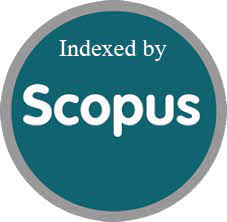Mobilty Aid for Dirrently Abled Persons - A Case Report
DOI:
https://doi.org/10.52783/jns.v14.1976Keywords:
Artificial Intelligence, Mobility Assistance, Medical Devices, QuadriplegicsAbstract
The problem being addressed is the lack of suitable mobility solutions for paraplegic and quadriplegic patients, particularly those with additional disabilities such as blindness, Parkinson’s, or Alzheimer’s disease. Conventional electric wheelchairs currently on the market are inadequate for individuals who cannot operate joystick controls due to paralysis or cognitive impairments.
Quadriplegic patients, who are paralyzed in both arms and legs, struggle to perform basic tasks such as movement. Approximately 20 per 100,000 people are quadriplegic, and existing solutions do not provide the necessary independence Similarly, paraplegic patients with blindness face difficulties navigating obstacles with conventional wheelchairs, affecting around 30 per 100,000 people Additionally, Parkinson’s patients, who suffer from tremors and balance issues, cannot operate standard wheelchairs, affecting nearly 2 million people in India Alzheimer’s patients, totaling 3.69 million in India, face challenges in remembering locations during routine movements The lack of appropriate technology that addresses these specific needs results in decreased independence, lowered
Downloads
Metrics
References
U. Cortés, C. Urdiales, R. Annicchiarico, C. Barrué, A.B. Martinez, C. Caltagirone: Assistive Wheelchair Navigation: A Cognitive View, Studies in Computational Intelligence: Advanced Computational Intelligence Paradigms in Healthcare – 1, Vol. 48, 2007, pp. 165 – 187.
A. Landi: Update on Tetraplegia, Journal of Hand Surgery, Vol. 28, No. 3, June 2003, pp. 196 – 204.
3. N.I. Katevas, N.M. Sgouros, S.G. Tzafestas, G. Papakonstantinou, P. Beattie, J.M. Bishop, P. Tsanakas, D. Koutsouris: The Autonomous Mobile Robot SENARIO: A Sensor Aided Intelligent Navigation System for Powered Wheelchairs, IEEE Robotics and Automation Magazine, Vol. 4, No. 4, Dec. 1997, pp. 60 – 70.
G. Bourhis, O. Horn, O. Habert, A. Pruski: An Autonomous Vehicle for People with Motor Disabilities, IEEE Robotics and Automation Magazine, Vol. 8, No. 1, March 2001, pp. 20 – 28.
A. Lankenau, T. Rofer: A Versatile and Safe Mobility Assistant, IEEE Robotics and Automation Magazine, Vol. 8, No. 1, March 2001, pp. 29 – 37.
M. Mazo: An Integral System for Assisted Mobility (Automated Wheelchair), IEEE Robotics and Automation Magazine, Vol. 8, No. 1, March 2001, pp. 46 – 56.
H.A. Yanco: Wheelesley: A Robotic Wheelchair System: Indoor Navigation and User Interface, Lecture Notes in Artificial Intelligence, Vol. 1458, Assistive Technology and Artificial Intelligence, Applications in Robotics, User Interfaces and Natural Language Processing, Berlin, Springer, Germany, 1998, pp. 256 – 268.
C.H. Kuo, H.H.W. Chen: Human-oriented Design of Autonomous Navigation Assisted Robotic Wheelchair for Indoor Environments, IEEE International Conference on Mechatronics, Budapest, Hungary, 03 – 05 July 2006, pp. 230 – 235.
J.M. Detriche, B. Lesigne: Robotic system MASTER, European Conference on the Advancements of Rehabilitation Technology, Maastricht, Pays-Bas, Holland, 05 – 08 Nov. 1990, pp. 12 – 15.
J.L. Jaffe: A Case Study: The Ultrasonic Head Controlled Wheelchair and Interface, OnCenter: Technology Transfer News, Vol. 1, No. 2, 1990.
R.C. Simpson, S.P. Levine: Voice Control of a Powered Wheelchair, IEEE Transactions on Neural Systems and Rehabilitation Engineering, Vol. 10, No. 2, June 2002, pp. 122 – 125.
P. Pino, P. Amoud, E. Brangier: A More Efficient Man Machine Interface: Fusion of the Interacting Telethesis and Smart Wheelchair Projects, 2nd International Conference on Knowledge-based Intelligent Electronic System, Adelaide, Australia, 21 – 23 April 1998, pp. 41 – 45.
H.A. Yanco: Integrating Robotic Research: A Survey of Robotic Wheelchair Development, AAAI Spring Symposium on Integrating Robotic Research, Stanford, CA, USA, March 1998.
M. Slavkovic, D. Jevtic: Face Recognition using Eigenface Approach, Serbian Journal of Electrical Engineering, Vol. 9, No. 1, Feb. 2012, pp. 121 – 130.
S. Mitra, T. Acharya: Gesture Recognition: A Survey, IEEE Transactions on Systems, Man, and Cybernetics, Part C: Applications and Reviews, Vol. 37, No. 3, May 2007, pp. 311 – 324.
Downloads
Published
How to Cite
Issue
Section
License

This work is licensed under a Creative Commons Attribution 4.0 International License.
You are free to:
- Share — copy and redistribute the material in any medium or format
- Adapt — remix, transform, and build upon the material for any purpose, even commercially.
Terms:
- Attribution — You must give appropriate credit, provide a link to the license, and indicate if changes were made. You may do so in any reasonable manner, but not in any way that suggests the licensor endorses you or your use.
- No additional restrictions — You may not apply legal terms or technological measures that legally restrict others from doing anything the license permits.










